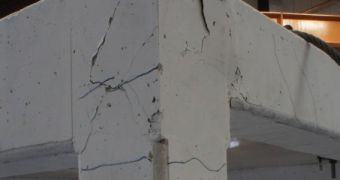Researchers at the University of Sheffield, led by professor Kypros Pilakoutas, announce the development of a new technology for consolidating buildings affected by large earthquakes, such as the one that struck Haiti in January 2010, claiming between 100,000 and 150,000 lives.
A total of 145,000 people are still homeless in the impoverished nation even today, four years after the tremor. This lack of housing is due to the fact that the earthquake rendered thousands of constructions uninhabitable, while utterly obliterating others. With the new technology, the Sheffield group plans to aid those whose homes are not a total ruin.
The approach is as simple as wrapping metal straps around the floors and support columns of a building. The key element here is tensing the straps, either by hand, or by using compressed air tools. This low level of technology ensures that no training is needed, which is perfect for a country like Haiti, where illiteracy runs rampant, PhysOrg reports.
“The strapping works very much like a weight-lifter's belt, by keeping everything tightly compressed to reduce tension on the concrete columns of the structure,” Pilakoutas explains, saying that the method only works with structures made out of reinforced concrete, a common construction technique around the world.

 14 DAY TRIAL //
14 DAY TRIAL //